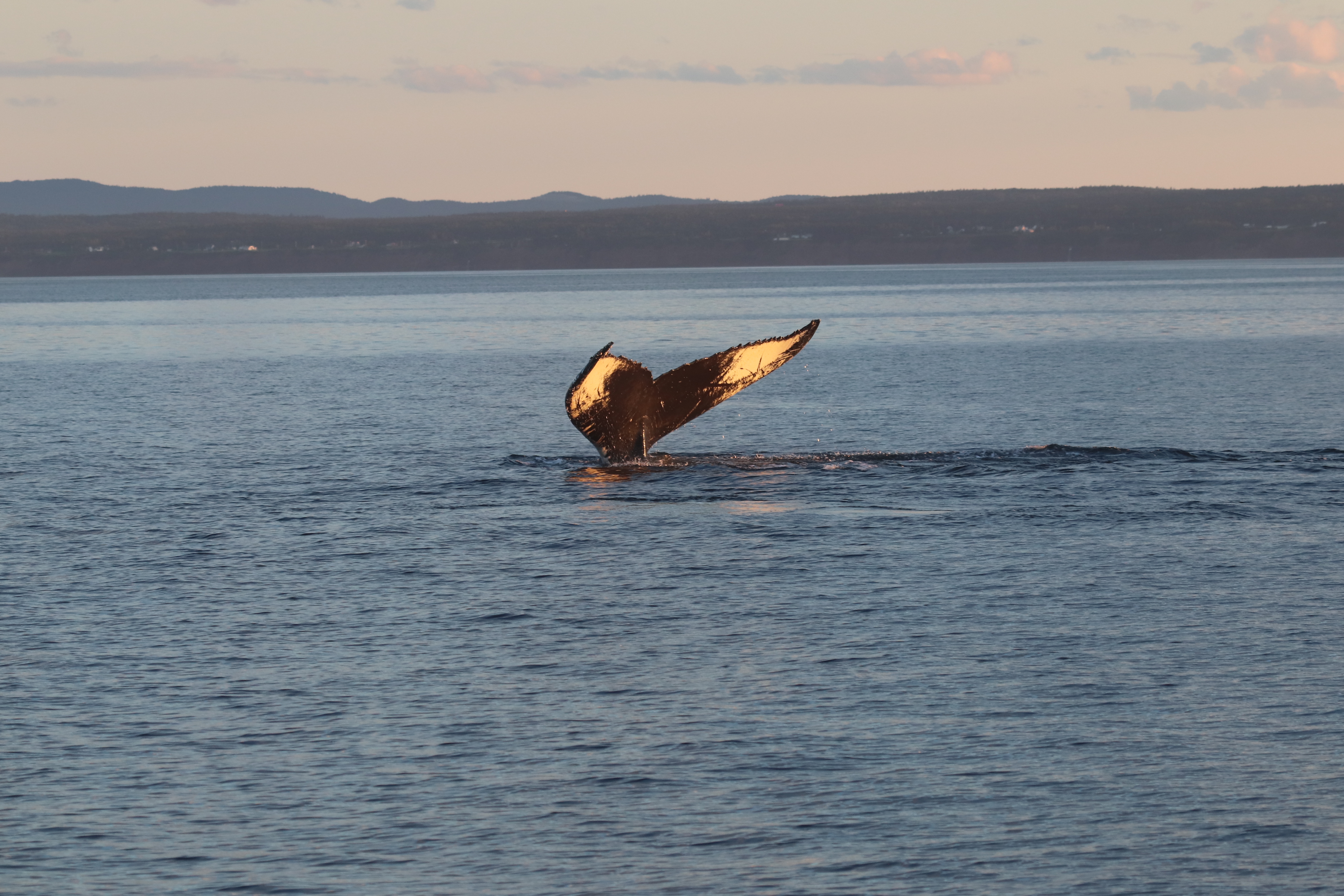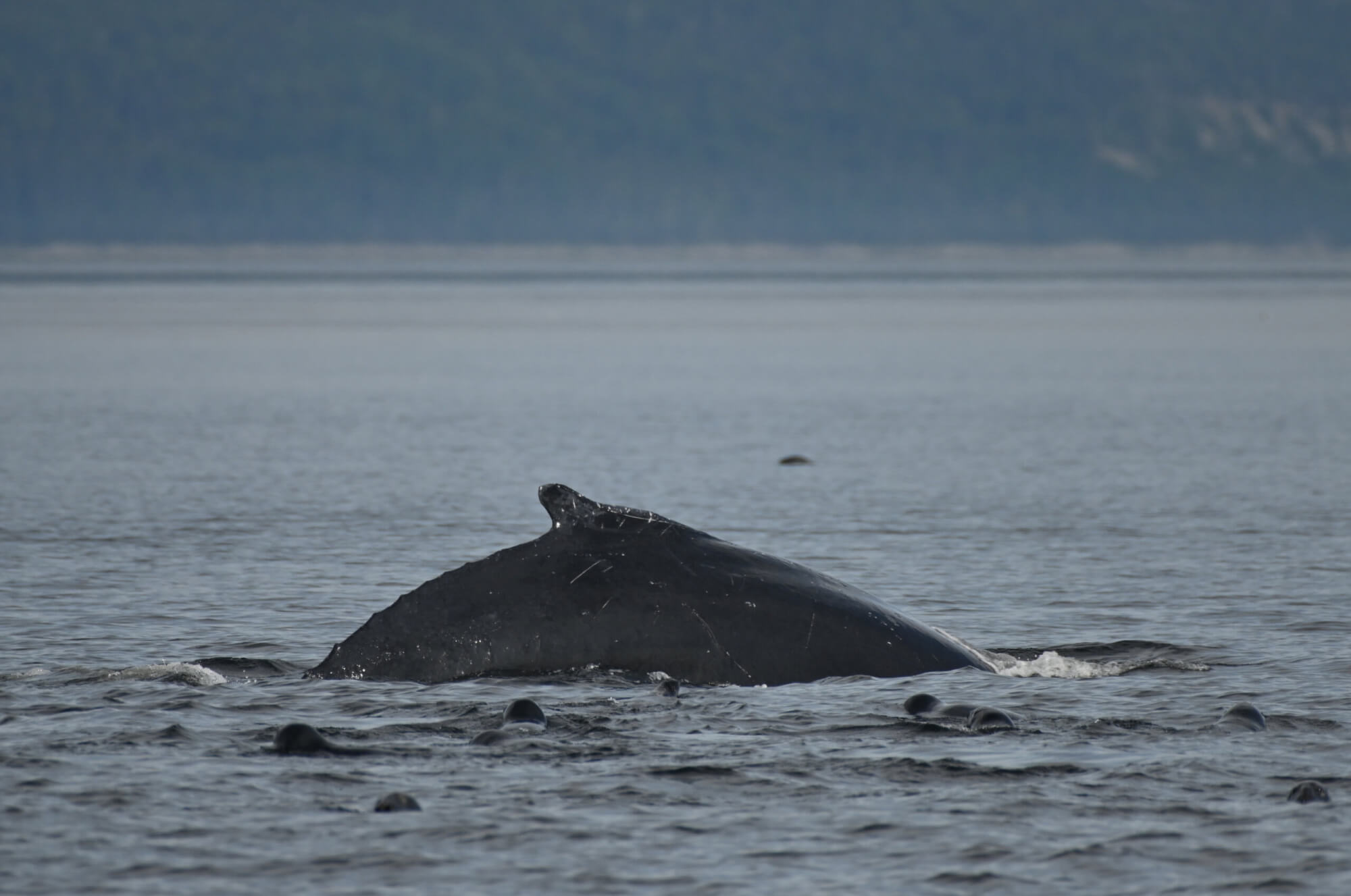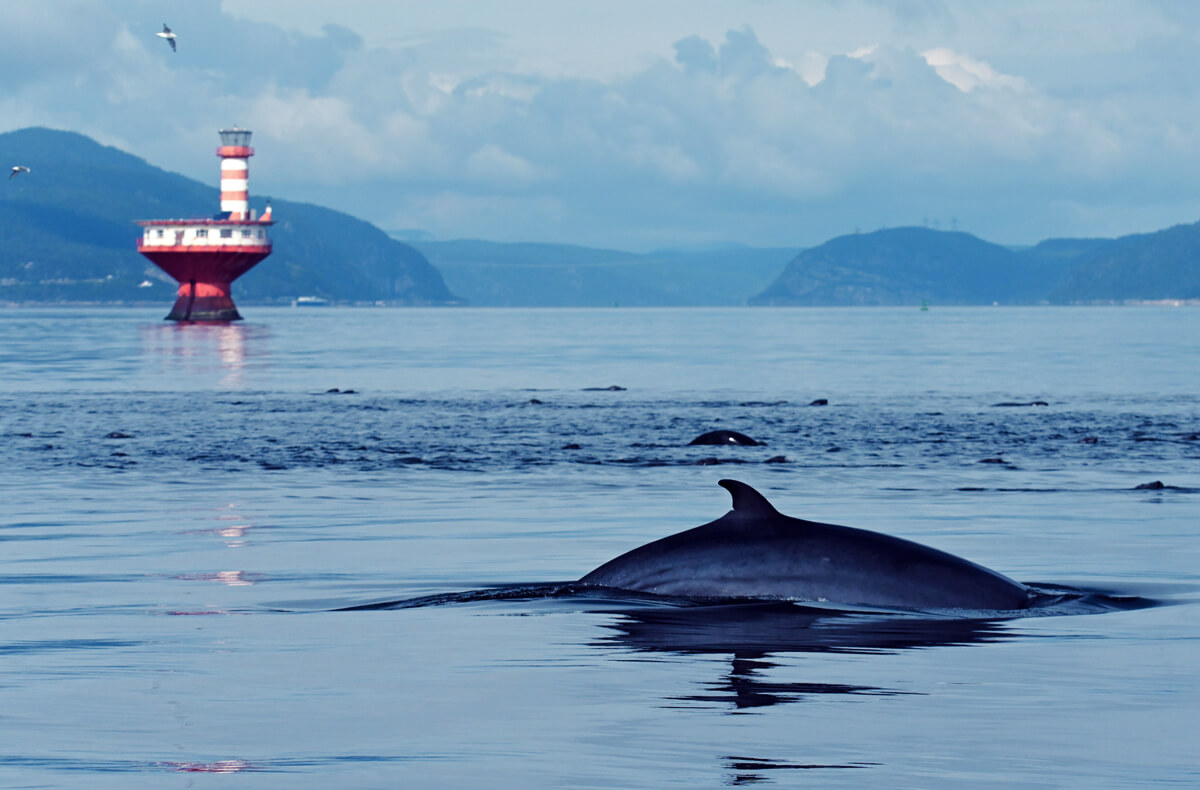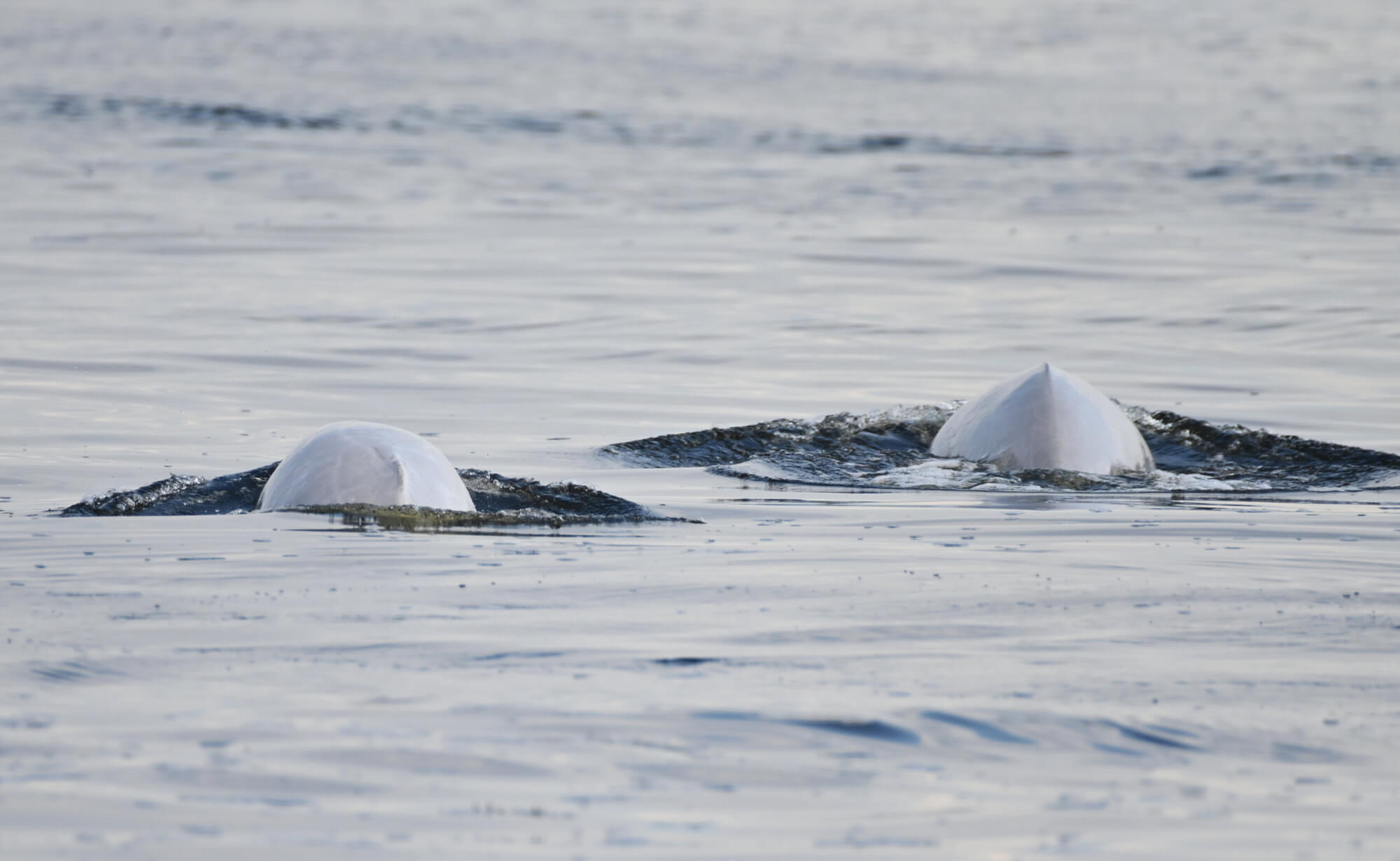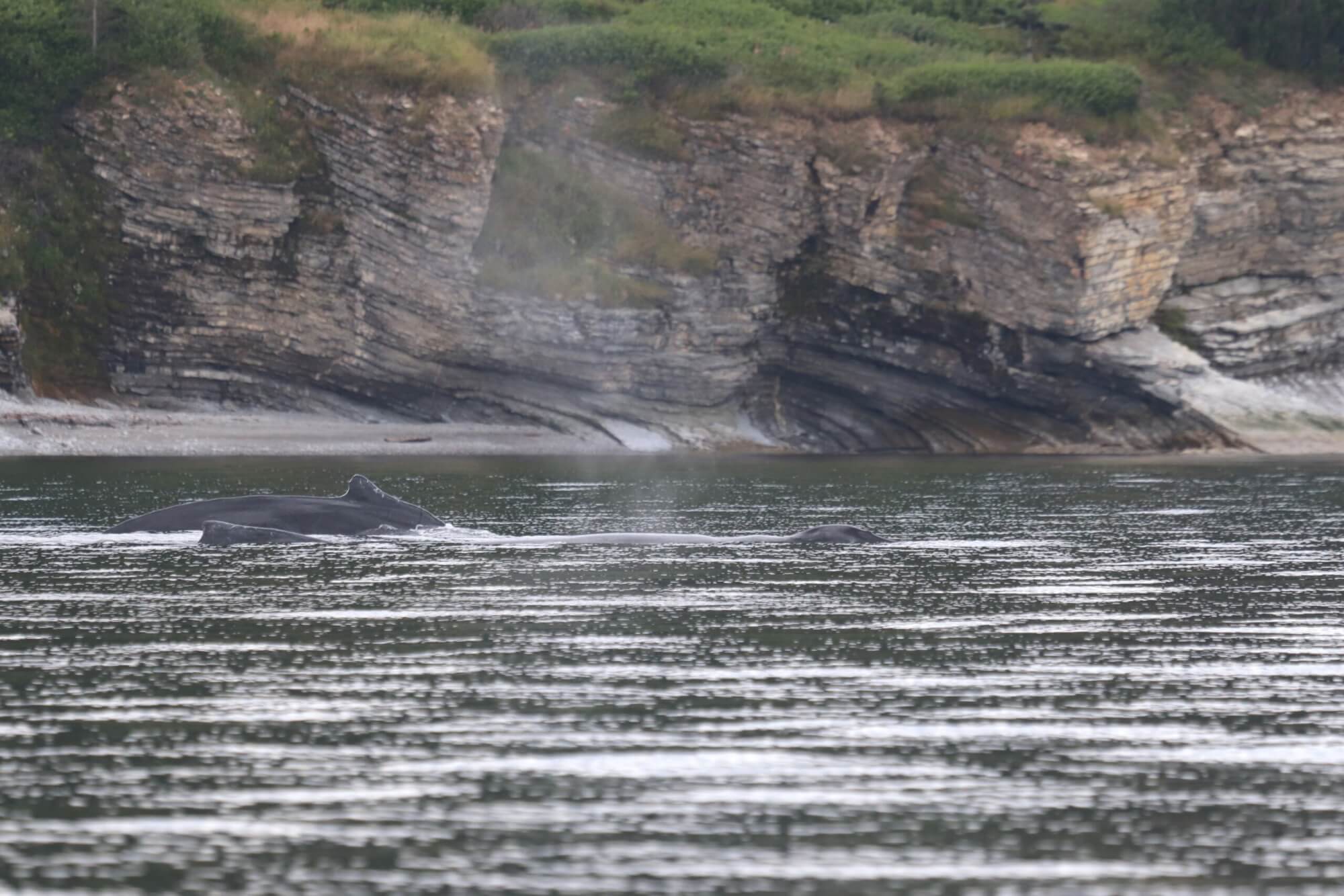The magic of moments along the St. Lawrence is in abundance as August comes to a close. It’s a graceful blend of stunning marine life, colorful horizons, gentle temperatures and enriching exchanges. It’s also the splendor of a beluga whale’s white back with the moon’s reflections on the sparkling water, or the salty wind blowing offshore and tangling your hair as you hear the powerful blow of a large whale.
Cetacean watching
In Les Escoumins, pinnipeds and cetaceans can be observed from the Marine Environment Discovery Centre. Harbour and grey seals are reported, as are harbour porpoise, beluga, minke and humpback whales. A similar picture emerges from the Cap de Bon-Désir Interpretation and Observation Centre in Les Bergeronnes. Both are must-see whale-watching sites on the Côte-Nord whale-watching trail!
There are around seven humpback whales in the Saguenay–St. Lawrence Marine Park. Special mention goes to the arrival of humpback whale H824, aka Chewbacca, present for the first time this season. This female has a distinctive coloration pattern, her left lobe is trimmed at the tip and, on the tip of the right lobe, we can see bite marks that could be attributed to an attack by killer whales. Although killer whales rarely hunt great whales, some populations may attack calves on their first migration. Haut-Fond-Prince seemed to be a favorite feeding spot on August 26, reports a naturalist, “there were between 100 and 200 grey seals with Guadeloupe and not far from a dozen minke whales.”
Despite the presence of all these humpback whales, one observer was less fortunate in her quest to see the great whales: “I heard there were big whales, but where were they? I don’t know!” She did spot a harbor seal swimming near the pilot wharf in Les Escoumins. The water was so clear that she could even make out its flippers in the water. A few days later, she spotted a minke whale in a sea of oil at sunset in Les Bergeronnes. Quite a romantic sight!
A resident of Tadoussac also reported seeing a school of herring as it passed through the entrance to the Saguenay: “At least, it looked like it,” he explains, “I’d seen them before in Tadoussac Bay, but never in the Saguenay. […] The belugas seemed to feed there!
Breaths from the St. Lawrence
If mysterious blows were reported in Pointe-des-Monts last week, would they have moved to Franquelin this week? On Sunday August 27, a cetacean enthusiast spotted blows offshore that didn’t resemble those of a fin, humpback or blue whale. There must have been between 2 and 3 individuals,” he says. The blows almost looked like they were in a heart shape, so I thought maybe they were right whale blows.” If you take a look at the interactive Whale-in-Sight map, a sighting of an individual was indeed made on the same date, just off Baie-Comeau. A few days later, a humpback whale was seen diving close to shore. Minke whales, harbour porpoises and seals were also reported in the same area.
À Pointe-des-Monts, un riverain a pu voir un phoque en pleine action, attraper un bar rayé et s’en régaler. Aucun souffle à l’horizon, mais des petits rorquals s’aventurent à proximité de la côte, pendant que les oiseaux marins se nourrissent de lançons. Depuis Port-Cartier, une quinzaine de phoques communs se reposaient sur les roches, dans une petite baie « cachée » connue par une observatrice aguerrie. L’équipe de la Station de recherche des îles Mingans (MICS) ne chôme pas! Dans la dernière semaine, c’est plus d’une quinzaine de baleines noires de l’Atlantique Nord et quatre rorquals communs qui ont été comptabilisés. L’une des baleines noires était même accompagnée de son veau. Chaque année, les naissances de baleineau suscitent l’espoir pour cette espèce en voie de disparition. L’observation d’un jeune en bonne santé est donc synonyme de bonne nouvelle.
A Gaspesian celebrity
On the south shore, in Sainte-Anne-des-Monts, several seals rest in front of a Chalet. Further east, humpback, fin and minke whales swim in the salt waters of Gaspé Bay. Harbour porpoises, grey and harbour seals also populate the area. This week, a naturalist from the Réseau d’observation des mammifères marins (ROMM) again identified the Tic Tac Toe humpback whale, one of the best-known whales in the St. Lawrence!
Where are the whales this week? Observation map
These data were reported by our network of observers. They give an idea of the presence of whales and in no way represent the actual distribution of whales in the St. Lawrence. Use it for fun!
Click on the whale or seal icons to discover the species, the number of individuals, additional information or photos of the sighting. To enlarge the map, click on the icon in the top right-hand corner. The map works well on Chrome and Firefox, but not so well on Safari.
To display the list of sightings, click on the icon in the top left-hand corner.


